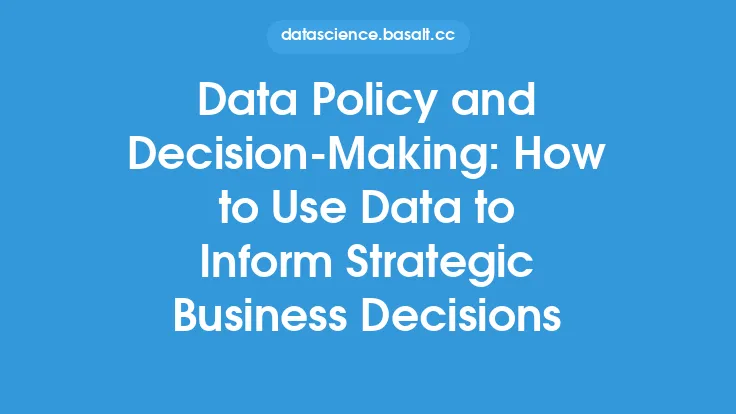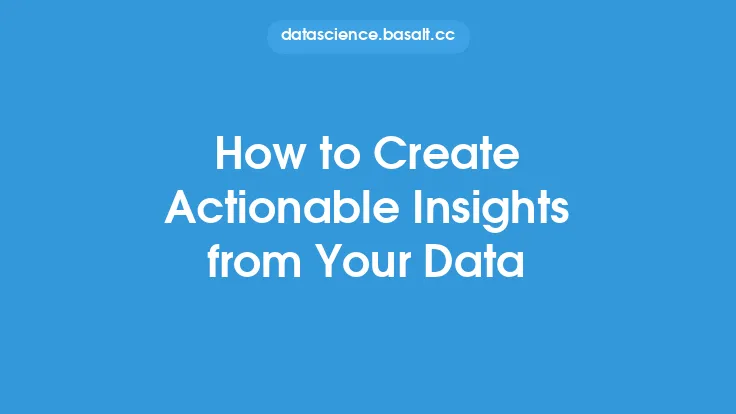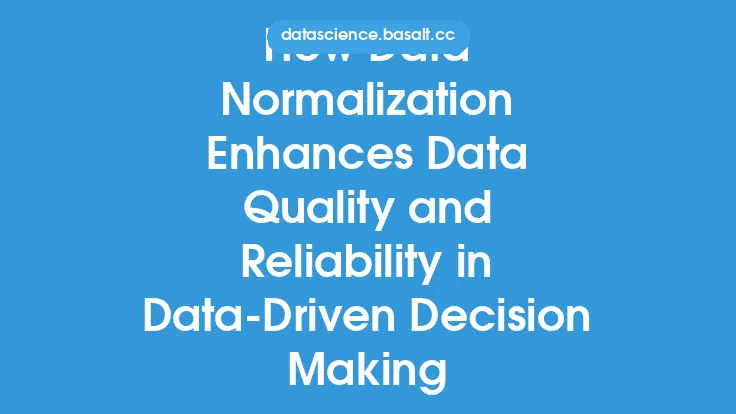In today's data-driven world, organizations and individuals alike rely on data analysis to inform their decisions. The ability to collect, analyze, and interpret large amounts of data has become a crucial skill in various fields, including business, healthcare, finance, and more. However, with the increasing amount of data available, it can be challenging to extract meaningful insights and make informed decisions. This is where data-driven decision making comes in – a process that involves using data analysis to guide decision-making.
Introduction to Data-Driven Decision Making
Data-driven decision making is a systematic approach to decision-making that relies on data analysis and interpretation. It involves collecting and analyzing data, identifying patterns and trends, and using this information to inform decisions. This approach is based on the idea that data can provide a more accurate and objective understanding of a situation than intuition or personal experience. By using data to drive decision-making, organizations and individuals can reduce the risk of errors, improve outcomes, and increase efficiency.
The Process of Data-Driven Decision Making
The process of data-driven decision making involves several steps, including:
- Problem definition: Identify a problem or opportunity that requires a decision.
- Data collection: Gather relevant data from various sources, such as databases, surveys, or sensors.
- Data cleaning and preprocessing: Clean and preprocess the data to ensure it is accurate, complete, and in a suitable format for analysis.
- Data analysis: Apply statistical and analytical techniques to extract insights from the data.
- Insight interpretation: Interpret the results of the analysis, identifying patterns, trends, and correlations.
- Decision-making: Use the insights gained from the analysis to inform a decision.
- Evaluation: Evaluate the outcome of the decision and refine the process as needed.
Key Concepts in Data Interpretation
To effectively interpret data, it is essential to understand several key concepts, including:
- Descriptive statistics: Measures of central tendency, such as mean, median, and mode, and measures of variability, such as range and standard deviation.
- Inferential statistics: Techniques used to make conclusions about a population based on a sample of data, such as confidence intervals and hypothesis testing.
- Correlation and causation: The difference between correlation (a statistical relationship between two variables) and causation (a cause-and-effect relationship).
- Confounding variables: Variables that can affect the relationship between two variables, leading to biased or incorrect conclusions.
Common Challenges in Data-Driven Decision Making
Despite the benefits of data-driven decision making, there are several common challenges that can arise, including:
- Data quality issues: Poor data quality can lead to inaccurate or misleading insights.
- Limited data: Insufficient data can make it difficult to draw reliable conclusions.
- Complexity: Large datasets and complex analytical techniques can be overwhelming.
- Bias: Biases in data collection, analysis, or interpretation can lead to incorrect conclusions.
- Communication: Effectively communicating insights and recommendations to stakeholders can be a challenge.
Best Practices for Data-Driven Decision Making
To overcome these challenges and ensure effective data-driven decision making, several best practices can be employed, including:
- Use high-quality data: Ensure that data is accurate, complete, and relevant to the problem or opportunity.
- Use appropriate analytical techniques: Select techniques that are suitable for the data and the problem, and avoid over-complicating the analysis.
- Consider multiple perspectives: Incorporate diverse perspectives and expertise to ensure a comprehensive understanding of the issue.
- Communicate effectively: Use clear and concise language to communicate insights and recommendations to stakeholders.
- Continuously evaluate and refine: Regularly evaluate the outcome of decisions and refine the process as needed to ensure ongoing improvement.
Advanced Techniques for Data-Driven Decision Making
In addition to the basic concepts and best practices, several advanced techniques can be used to enhance data-driven decision making, including:
- Machine learning: Using algorithms to identify patterns and make predictions from large datasets.
- Predictive analytics: Using statistical models to forecast future events or behaviors.
- Simulation modeling: Using computer models to simulate complex systems and predict outcomes.
- Optimization techniques: Using mathematical techniques to identify the best solution among a set of possible options.
- Data mining: Using automated techniques to discover patterns and relationships in large datasets.
Real-World Applications of Data-Driven Decision Making
Data-driven decision making has numerous real-world applications, including:
- Business: Using data to inform marketing, sales, and operational decisions.
- Healthcare: Using data to improve patient outcomes, reduce costs, and enhance quality of care.
- Finance: Using data to inform investment decisions, manage risk, and optimize portfolios.
- Government: Using data to inform policy decisions, improve public services, and enhance transparency.
- Non-profit: Using data to inform program decisions, measure impact, and optimize resources.
Conclusion
Data-driven decision making is a powerful approach to decision-making that relies on data analysis and interpretation. By understanding the process, key concepts, and best practices, organizations and individuals can make informed decisions that drive success. While there are challenges to overcome, the benefits of data-driven decision making make it an essential skill in today's data-driven world. As data continues to grow in volume and complexity, the importance of data-driven decision making will only continue to increase, making it a crucial aspect of any organization or individual's strategy for success.





